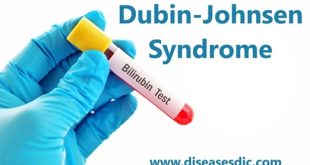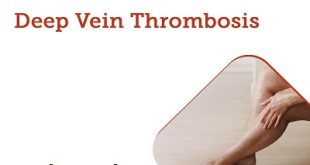Overview
Deafblindness is a combination of sight and hearing loss that affects a person’s ability to communicate, access information and get around.
It’s also sometimes called “dual sensory loss” or “multi-sensory impairment”.
A deafblind person won’t usually be totally deaf and totally blind, but both senses will be reduced enough to cause significant difficulties in everyday life.
These problems can occur even if hearing loss and vision loss are mild, as the senses work together and one would usually help compensate for loss of the other.
Types of deafblindness
There are two main types of deafblindness:
Congenital deafblindness
You are born with sight and hearing impairment, or it becomes apparent within the first two years of life.
This may be because of infections during pregnancy, premature birth, birth trauma (physical injury) and rare genetic conditions (conditions you inherit from a parent).
Acquired deafblindness
You develop sight and hearing loss later in life. Anyone can become deafblind at any time through illness, accident or ageing.
Sometimes, you can be born with either a hearing impairment only or a vision impairment only, but as you age your other senses also start to change or worsen.
What Causes Deaf-Blindness?
There are more than 70 causes of deaf-blindness. The most common are premature birth and CHARGE syndrome. CHARGE syndrome is a pattern of birth defects that affect the heart, genitals, eyes, and ears, among other areas.
Several other disorders you’re born with or inherit can cause deaf-blindness, including:
- Usher syndrome. This causes ear abnormalities and eye disease, which lead to hearing and vision loss that gets worse over time.
- Down syndrome. People with Down syndrome are at higher risk for birth defects and other problems that cause hearing and vision loss.
- Stickler syndrome. This is a group of genetic conditions that lead to a distinct facial appearance along with eye and ear problems.
- Dandy-Walker syndrome. In this condition, a part of your brain called the cerebellum doesn’t develop properly. Among other problems, it can cause fluid to build up and put pressure on the brain.
- Goldenhar syndrome. This mainly affects the ears, eyes, and spine, and also causes unevenness in the face.
Risk factors of Deafblindness
Certain risk factors that affect babies before or at birth also cause deaf-blindness. They include:
- Congenital cytomegalovirus. Babies can be born with this virus. It affects the brain, liver, lungs, and hearing, among other things.
- Hydrocephalus. This is a buildup of spinal fluid that puts pressure on the brain.
- Microcephaly. This happens when a baby’s head is smaller than normal. It can happen on its own or as a symptom of another condition.
Some people are born with either a vision or hearing problem, then develop the other impairment later on because of an illness or injury.
Signs and symptoms of deafblindness
A person who’s deafblind won’t usually be totally deaf and totally blind, but both senses will be reduced enough to cause difficulties with everyday activities.
The hearing and/or vision problems may be present from birth, but in many cases one or both problems develop gradually as a person gets older and they may not notice it themselves at first.
If someone you know has a combination of the signs mentioned below, it’s possible they have some degree of deafblindness and should seek medical advice.
Signs of a hearing problem
Hearing loss can occur from birth or may develop gradually or suddenly later on.
Signs that someone may have a problem with their hearing include:
- not hearing you if you speak to them from behind
- needing to turn up the volume on the television or radio
- difficulty following a conversation – particularly if several people are speaking or the person they’re speaking to is unfamiliar
- not hearing noises around them, such as a knock at the door or the doorbell ringing
- asking others to speak loudly, slowly and more clearly
- leaning in very close to hear what’s being said
If someone already has a hearing problem – for example, they wear a hearing aid or use sign language – keep an eye out for signs of vision problems that could develop (see below).
Signs of a vision problem
Vision loss can also be present from birth or develop later on.
Signs that someone may have a problem with their vision include:
- problems seeing in low light or bright light
- difficulty recognising people they know
- finding it hard to read facial expressions
- relying on touch to find and identify items more than usual
- needing to hold books or newspapers close to their face, or sitting near the television
- difficulty moving around unfamiliar places – they may bump into or trip over things regularly
- not looking directly at you or making proper eye contact
If a person already has a problem with their vision – for example, they wear glasses, use a cane to get around, or have a condition such as glaucoma or cataracts – keep an eye out for signs of hearing problems that could develop (see above).
How Deafblindness affects development?
A child with hearing and vision loss has difficulty or delays in understanding what’s going on around them. This means that deafblindness can affect other areas of your child’s development:
- Communicating – for example, your child might not see someone waving and smiling at them or be able to make eye contact.
- Talking – for example, your child might not point to objects, so the people nearby won’t name these objects.
- Telling the difference between day and night – this might make it hard for your child to settle into a regular sleeping routine.
- Sitting, crawling and walking – for example, your child might not want to move towards objects, because they can’t see or hear them.
- Learning to read and write – your child might be delayed in learning the motor and listening skills they need for reading and writing.
- Playing – for example, your child might be afraid to touch certain textures or explore areas they can’t see.
Diagnosing Deafblindness
Deafblindness may be detected soon after a baby is born or after tests carried out later in life.
If it isn’t and you are concerned about your baby, talk to your GP or health visitor.
Newborn screening
If your baby is born deafblind, this will usually be picked up during newborn screening – a series of checks to see if your baby has any serious health problems from birth, including with hearing or sight.
If newborn screening doesn’t pick up any problems, they may be detected during routine hearing tests and sight tests as your child gets older.
Support is available. Speak to your GP or health visitor if you have any concerns about your child’s hearing or vision at any point.
Hearing and sight tests for adults
Because deafblindness is more common in older people, it’s important to have routine eye tests – normally every two years.
You can ask your GP for a hearing test at any time if you think you’re losing your hearing.
If you have both vision and hearing impairment/Deafness, you should be identified with deafblindness. You should also have regular checks afterwards, as the level of care and support you need might change depending on how severely each sense is affected.
Remember, another term maybe used to describe your condition. This maybe dual sensory impairment, multi-sensory impairment or that you have a vision and hearing impairment.
Specialist assessment
As soon as deafblindness has been identified, a specialist assessment should be arranged by the local authority.
The assessment should only be carried out by a specially trained professional who is able to identify the deafblind person’s abilities and needs. The assessment should include assessing their needs in relation to:
- Communication
- One-to-one human contact
- Social interaction
- Emotional wellbeing
- Support with mobility
- Assistive technology
- Rehabilitation
The assessment will also take into account the person’s current needs and those that develop in the future.
A deafblind person should have access to services suitable to their level of hearing and sight and their individual needs. Mainstream services aimed mainly at blind or deaf people may not always be appropriate.
Management of Deafblindness
It’s not always possible to treat the underlying causes of deafblindness, but a range of care and support services is available to help people with the condition.
Most deafblind people will still have some hearing or vision. The level of care and support they need will depend on the severity of their hearing and vision problems.
Individual care plan
The individual abilities and needs of a deafblind person should be assessed soon after they’re diagnosed. This will allow a tailored care plan to be drawn up.
The care plan will aim to:
- preserve and maximise any remaining sensory functions the person has
- teach alternative communication methods such as the deafblind manual alphabet (see below)
- help the person retain as much independence as possible – for example, by recommending they receive training to use a long cane or guide dog or through the provision of a communicator guide
- for young children, ensure their educational needs are met
Some of the main services, techniques and treatments that may be recommended as part of a care plan are outlined below.
Communication systems
As deafblindness can make communicating by speech and writing difficult, alternative forms of communication may be necessary.
The main communication systems used by deafblind people include:
- clear speech – speaking clearly is one of the most effective and common ways of communicating with deafblind people who have some remaining vision and hearing
- deafblind manual alphabet – a tactile form of communication where words are spelt onto the deafblind person’s hand using set positions and movements
- block alphabet – a simple tactile form of communication where a word is spelt out in capital letters that are drawn onto the deafblind person’s palm
- hands-on signing – an adapted version of British Sign Language (BSL) where the deafblind person feels what’s being signed by placing their hands on top of the signer’s hand
- visual frame signing – an adapted version of BSL where the signs are adapted to be signed in a smaller space to match the position and size of a deafblind person’s remaining sight
- braille – a system that uses a series of raised dots to represent letters or groups of letters
- moon – similar to Braille, but uses raised, adapted capital letters that are simpler to feel
Vision aids
For some deafblind people, it may be possible to improve vision using low vision aids, such as glasses, magnifying lenses and task lights.
Specially designed items, such as telephones and keyboards, may also help someone who is visually impaired.
The Royal National Institute of Blind People (RNIB) has more information about everyday living with vision loss, including advice about the technology available to help with everyday tasks.
Many libraries stock a selection of large-print books and “talking books”, where the text is read aloud and recorded onto a CD. The RNIB also offers a talking book subscription service, where books can be ordered and delivered directly to your home or downloaded free of charge.
Hearing aids and implants
Some deafblind people may benefit from wearing a hearing aid. There are various hearing aid styles available to suit different types of hearing loss and personal preference.
Hearing aids use microphones to collect the sound from the environment, amplify it and deliver it into the ear canal of the wearer so that it can be processed by the auditory system. An audiologist (hearing specialist) will be able to recommend the most suitable type of aid after testing your hearing.
For some people, hearing aids that deliver the sound into the ear canal are not appropriate. In these cases, hearing may be improved using a surgically implanted hearing system, such as a cochlea implant or bone conducting hearing implant.
While these still use a microphone to collect the sound initially, they then convert that sound into either an electrical signal or vibration, passing it to the inner or middle ear for processing by the auditory system.
One-to-one support
Every deafblind person is entitled to help from a specially trained one-to-one support worker if they need it.
Depending on the person’s situation, this may be a:
- Communicator guide – someone who works with people who have become deafblind later in life, to offer the support the person needs to live independently
- Interpreter – someone who acts as a communication link between the deafblind person and other people, using the deafblind person’s preferred method of communication
- Intervenor – someone who works with children and adults who were born deafblind, to help them experience and join in the world around them as much as possible
Treating underlying conditions
Some conditions that affect hearing and vision can be treated using medication or surgery. For example:
- Cataracts can often be treated by surgically implanting an artificial lens in the eye – read more about cataract surgery
- Glaucoma can often be treated using eye drops or laser surgery – read more about treating glaucoma
- Diabetic retinopathy can be treated in the early stages using laser surgery – read more about treating diabetic retinopathy
Some causes of temporary hearing loss are also treatable, such as a build-up of earwax or middle ear infections.
 Diseases Treatments Dictionary This is complete solution to read all diseases treatments Which covers Prevention, Causes, Symptoms, Medical Terms, Drugs, Prescription, Natural Remedies with cures and Treatments. Most of the common diseases were listed in names, split with categories.
Diseases Treatments Dictionary This is complete solution to read all diseases treatments Which covers Prevention, Causes, Symptoms, Medical Terms, Drugs, Prescription, Natural Remedies with cures and Treatments. Most of the common diseases were listed in names, split with categories.







